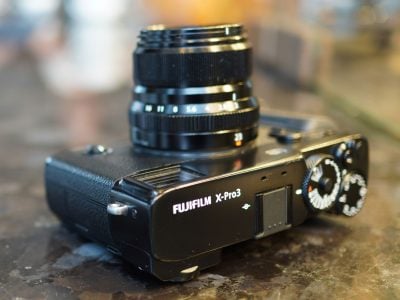Fujifilm X-Pro 3 review
-
-
Written by Gordon Laing
Intro
The Fujifilm X-Pro 3 is the new joint flagship in the X-series, alongside the earlier X-T3. Teased in September 2019 and officially announced a month later, the X-Pro 3 is the successor to the X-Pro 2 launched over three and a half years previously. As you’d expect, it equips Fujifilm’s niche but much loved rangefinder model with the latest 26 Megapixel X-Trans IV sensor and X-processor 4 which are already deployed on the X-T3 and X-T30, but accompanied by a number of design changes that could polarise fans, although – spoiler alert – I was fond of most of them.
For my in-depth review, I filmed two videos: the first is my hands-on field-test, where I talk about the shooting experience of the X-Pro3 around Florence, Italy. That’s my main in-depth review, although I’ve also included my initial hands-on preview video from the launch event if you want to quickly be briefed on the highlights; (Note: Fujifilm originally quoted the video as being in 10 bit, but it’s actually 8 bit. The USB C port can now be adapted for headphone use though). For those who prefer to read, I’ve also transcribed the highlights of both videos below and throughout this review! So if you’re interested in the X-Pro3 and wondering if it’s the right camera for you, you’ve come to the right place!
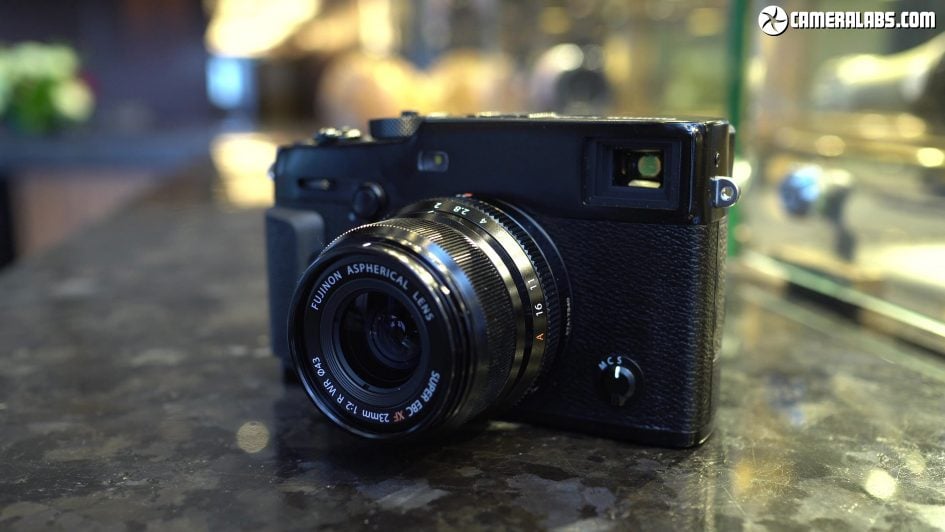
Above: At first glance, the X-Pro 3 shares a similar design to its predecessors, a solid rectangular block with many stylistic nods to vintage film cameras. Fujifilm’s retained the magnesium alloy shell and weather-proofing of the X-Pro 2, but swapped the top and bottom plates for titanium for greater toughness – the dimensions and body weight remain roughly unchanged though. It’s now also available in three finishes: plain black, Dura Black and Dura Silver, with the Dura versions adding Duratect coatings – typically deployed on luxury watches – on the metal surfaces to increase its resistance to scratches. The plain black model which I tried will cost around 1700 pounds and the Dura-coated versions add about 180 pounds more.
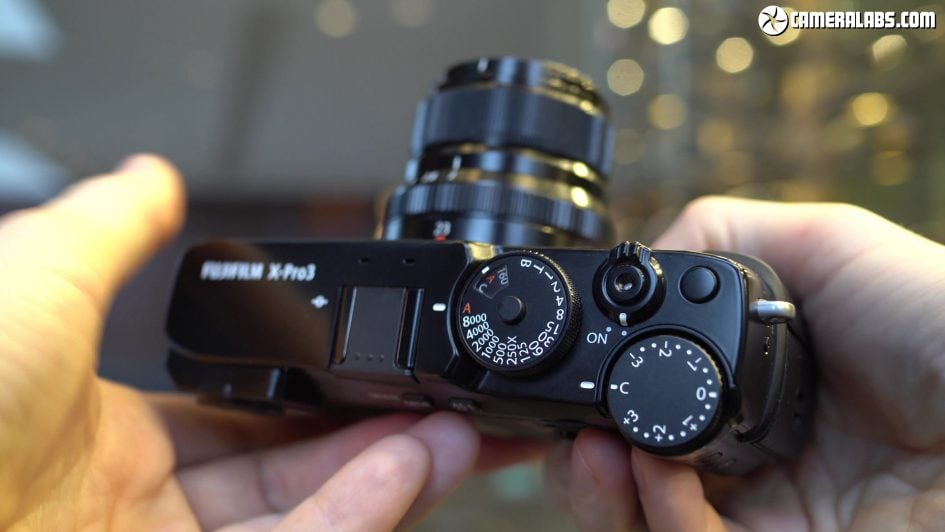
Above: The controls on the upper right surface are essentially unchanged from the X-Pro 2, so you have the dedicated shutter dial with speeds from one to 8000th of a second, plus Bulb, Time and a lockable A position which switches into Aperture Priority or Program depending on the lens ring. Lift up the outer edge and you can adjust the ISO sensitivity, indicated in a small window, just like old film cameras. To the right is a shutter release button, threaded for old style cable accessories, while in the corner is a non-locking exposure compensation dial. The only change with the X-Pro2 here is the now unlabelled Function button; I’d have preferred the EV dial to be lockable too as I sometimes turned it by mistake when pulling it out of a tight bag.
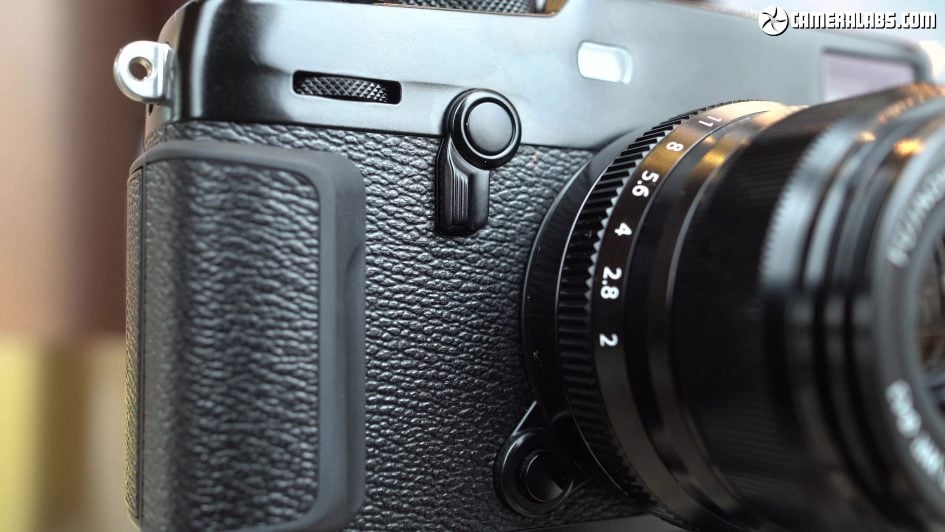
Above: The front controls are also mostly unchanged, although the front finger dial mysteriously has lost its earlier push function. The main action here though revolves around the lever that’s reminiscent of the old self-timer controls on some film cameras. Here, like its predecessor, it switches between the viewfinder modes which I’ll show you later. Eagle-eyed Fuji-fans will also notice the grip now has a small vertical indent that improves the feel in your hands more than it looks.
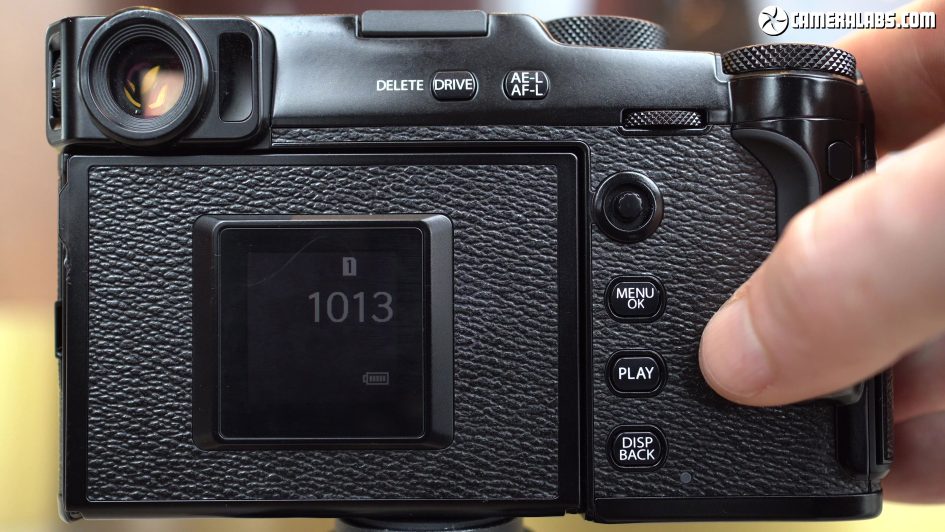
Above: Round the back, the most obvious change is of course the apparent lack of a main screen, but fear not for the X-Pro 3 has a couple of tricks up its sleeve I’ll show you in a moment. The other big change is the removal of the four joypad-style cross keys, which I must admit I was fond of, although you can achieve the same navigation using the joystick. Fujifilm’s also changed the function of the buttons to the side and the thumb dial remains fairly small and push-clickable. But forget about that I hear you cry, what about the screen? Where’s it gone?!
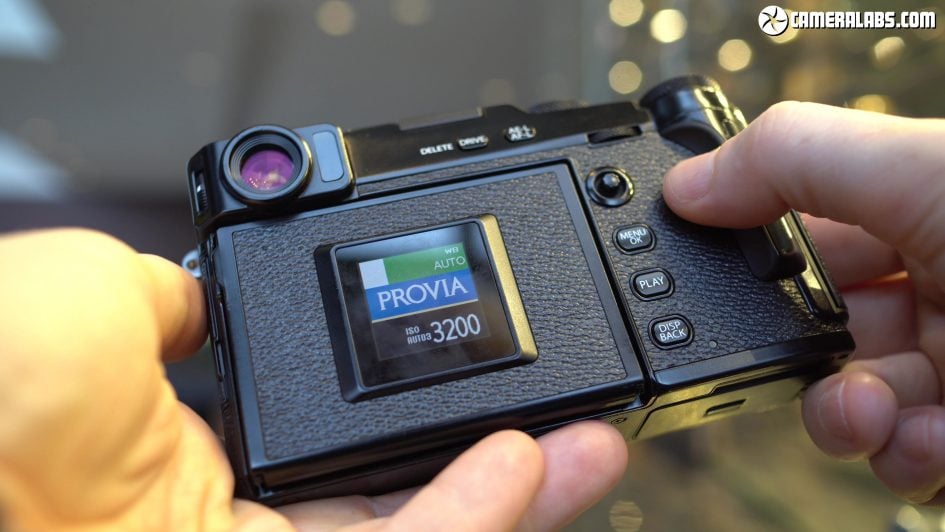
Above: Ok, the rear of the X-Pro3 is now home to a small 1.28in non-backlit square display that shows the current Film Simulation in use – a playful nod to the small windows on old film cameras where you’d slot-in a piece of the cardboard film packaging for reference. It’s dynamic too, not just showing the active Film Simulation, but also the current sensitivity and white balance. It remains visible whether the power is on or off, but its actual visibility is very dependant on the viewing angle and ambient light, but I really enjoyed it regardless. A setting in the menus alternatively lets you switch the display to show basic shooting information at a glance, and this is customisable. Again a nice touch, although like the sub-monitor on the GFX-100 I didn’t enjoy having to delve into the menus just to switch its function. It’s also crying out for some kind of basic menu or setting navigation, most obviously a mini Q-menu. Hopefully its function can be expanded with a firmware update in the future if we all ask for it, but before you think this is the X-Pro 3’s only screen, prepare yourself for a grand reveal.
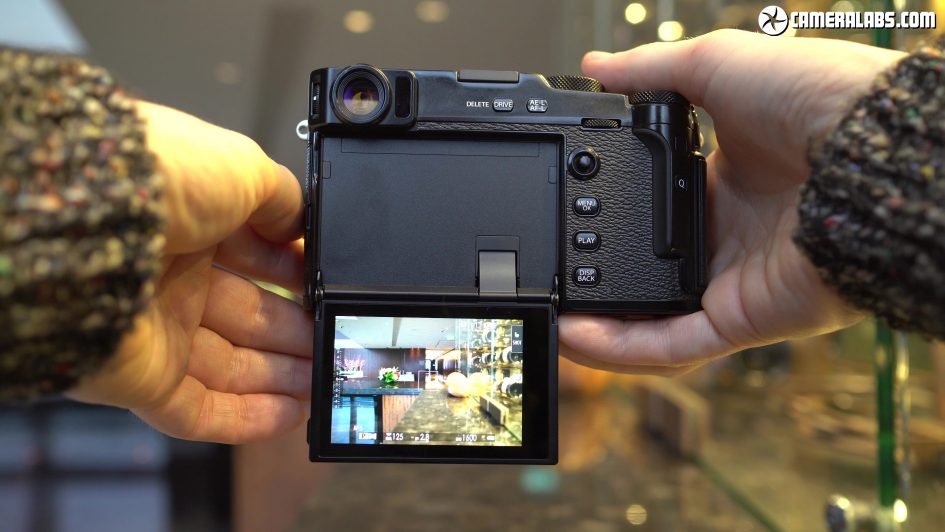
Above: In its biggest design change, the X-Pro 3’s main screen is hidden during normal operation and flipped down to view. It’ll angle down by 180 degrees, but won’t twist round to face you or angle out to the side, and if you’re mounted on a tripod, you won’t be able to angle down much beyond 90 degrees. It’s fine for waist-level shooting in the 90 degree position though – and this is a key advantage it has over the fixed screens of its predecessors, and it’s now touch-sensitive too. In terms of navigating the main menus, it’s obviously less convenient to flip the screen open for access, but you can alternatively access them through the viewfinder and once the camera’s set up, how often would you be adjusting them anyway?
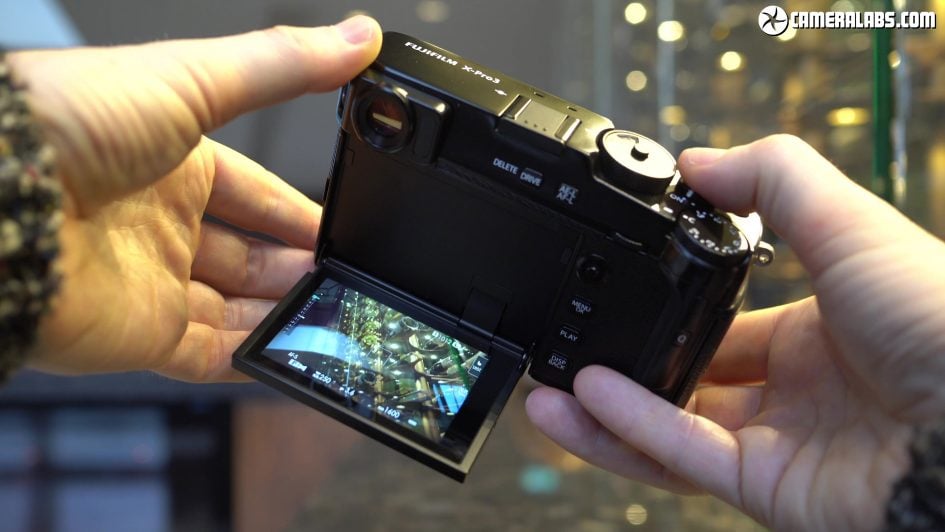
Above: Fujifilm’s reasoning behind the hidden screen was to focus your attention to the viewfinder experience, which after-all is the X-Pro’s unique selling point. By hiding the screen, the X-Pro 3 encourages you to shoot at eye-level and minimise the distractions of retreating to play back images after every shot. I think it’s an appropriate and even desirable solution for the core X-Pro audience, encouraging you to shoot traditionally at eye-level without the severity of losing the screen altogether as Leica has experimented with, plus you get waist-level shooting with the new screen too.
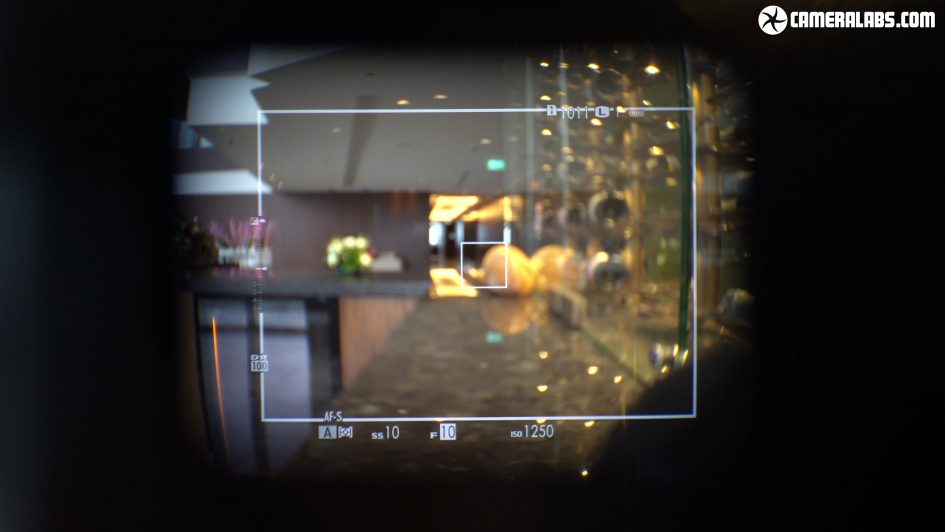
Above: The primary means of composition remains the viewfinder which inherits Fujifilm’s cunning hybrid capabilities from the X-Pro 2. You’re looking at the optical view here, which I actually filmed through the viewfinder to give you an idea of how it looks; it’s now a little larger, less distorted and with a slightly higher eye-point than before, but the main concept remains the same. The white frame indicates the area you’ll capture, and like rangefinders allows you to see outside the frame for objects about to enter. As an overlay, the frame also adjusts size and position to compensate for parallax with closer subjects, or indeed different lenses, and you can also see the active AF area. Pushing the viewfinder lever to the left toggles the hybrid view which overlays a tiny portion of the electronic panel in the lower right corner for focusing assistance and white balance preview – there’s no loss of coverage either as this corner only showed the lens barrel in the fully optical view.
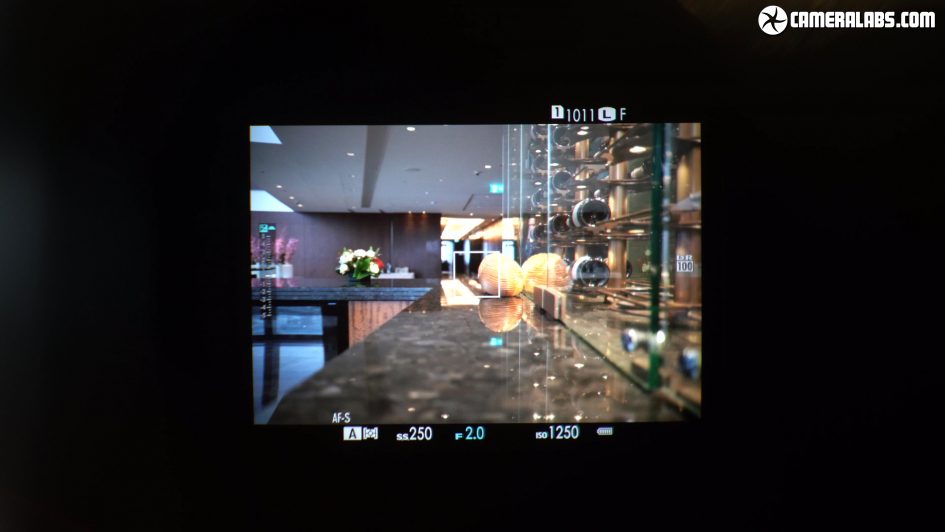
Above: Pushing the lever control to the right toggles the viewfinder between optical and electronic views and here’s the latter which now employs a higher resolution 3.69 million dot OLED panel that’s more detailed than its predecessor, not to mention brighter with a faster refresh and broader colour space. Like other electronic viewfinders, it’ll provide focusing assistance and previews of things like white balance and film simulation, and of course also let you playback images or navigate the menus; indeed the X-Pro 3 will considerately switch to the electronic view when you press the menu button even if you were previously composing in the optical mode.
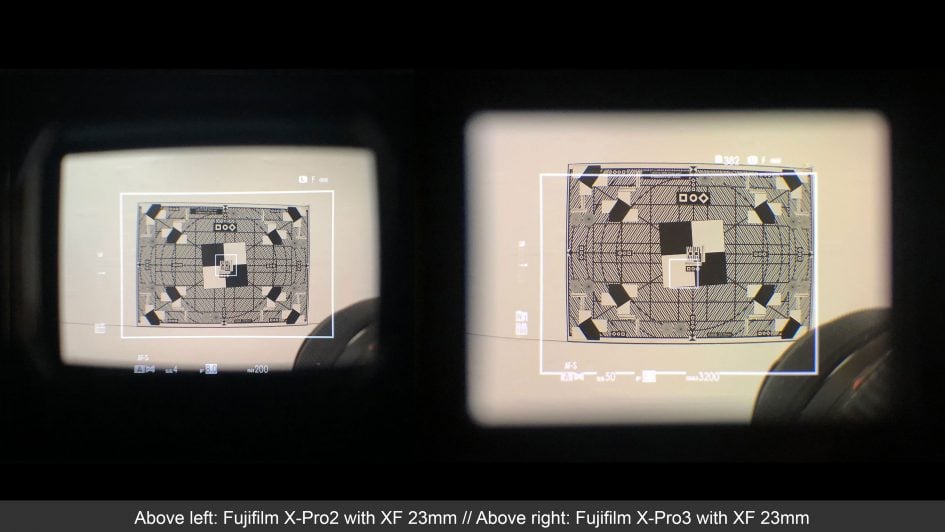
Above: It’s worth looking in more detail over how the optical rangefinder mode handles the two most common lenses you’ll be using with the X-Pro3 versus the X-Pro2. First here’s what you’ll see through the optical viewfinder of both models when fitted with a 23mm lens, where the coverage frame occupies roughly the same portion of the view. What is obvious here though is just how much bigger the viewfinder image is on the X-Pro3 on the right compared to the X-Pro2 on the left – these were photographed from the same distance to be comparable. The X-Pro3 is delivering the preferable experience here.
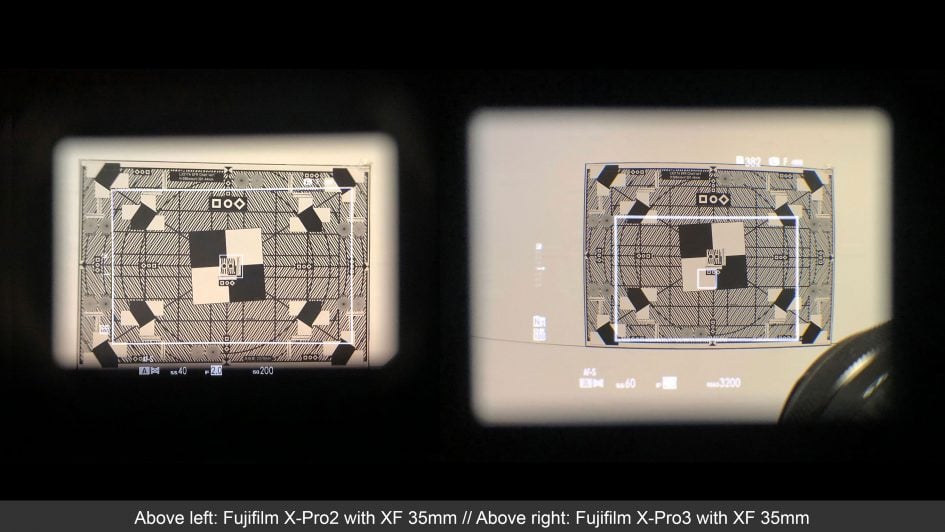
Above: Now for the view when both models are fitted with a 35mm lens. The older X-Pro2 features two viewfinder magnifications and here on the left has switched to its bigger one, allowing the coverage frame at 35mm to actually roughly match the frame when shooting with a 23mm lens. Conversely the X-Pro3 now only has one viewfinder magnification, so when fitting a longer lens, the coverage frame simply shrinks in size as seen on the right. Importantly though, some of this is compensated by the X-Pro3’s viewfinder image being bigger to start with, so if you compare the actual coverage frames here side-by-side, the X-Pro2’s dual-magnification advantage may not be as significant as you assumed. So at 35mm and above the dual magnification of the X-Pro2’s viewfinder does give it a small advantage over the X-Pro3, but at 23mm and wider, the bigger viewfinder image of the X-Pro3 gives it the lead over the 2. But the fact remains the sweet-spot for the X-Pro3’s optical viewfinder is when shooting with a 23mm lens.
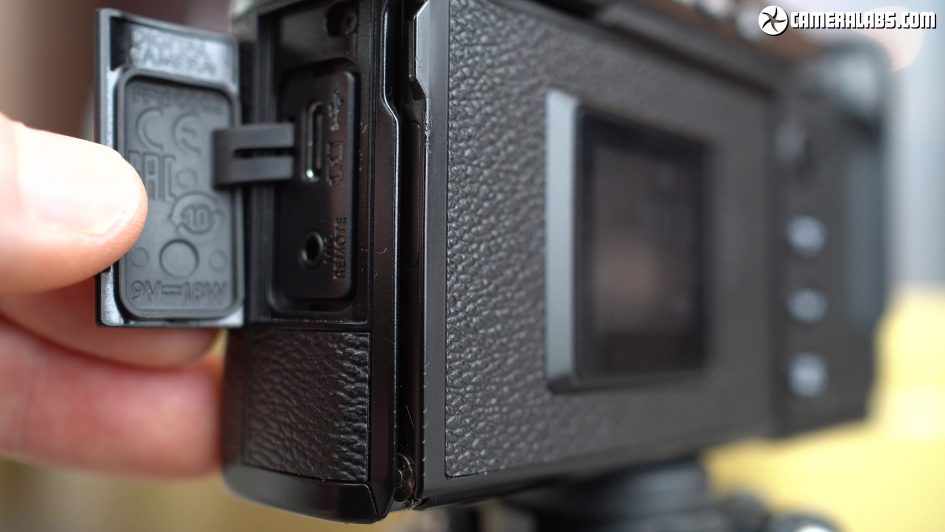
Above: In terms of wired connectivity, there’s just two: USB-C that supports 3.1 Gen 1 speeds and can be used for both charging and power during operation, alongside a 2.5mm jack that’s for a remote cord or an external microphone, although if you have a 3.5mm plug on your mic you’ll need to use an adapter. As far as I understand it, the USB C port can support headphones via an adapter like the X-T30. There’s no HDMI port, although I’m sure some owners might have wanted to connect it to a display for a slideshow, or is that just me?
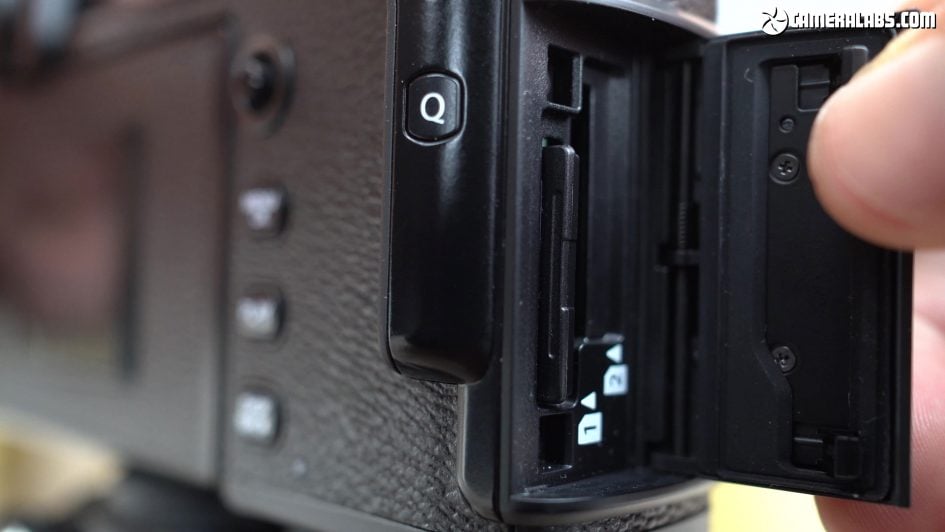
Above: Behind a door on the right are a pair of SD card slots, both exploiting UHS-II speeds. The X-Pro 3 also shoots faster than its predecessors, inheriting the 11fps mechanical shutter and 20fps electronic bursts of the X-T3 as well as the 30fps option with a crop. Meanwhile the battery is housed underneath and should be good for 370 frames per charge with the EVF, a boost over the previous models and again you can power the camera over USB too.
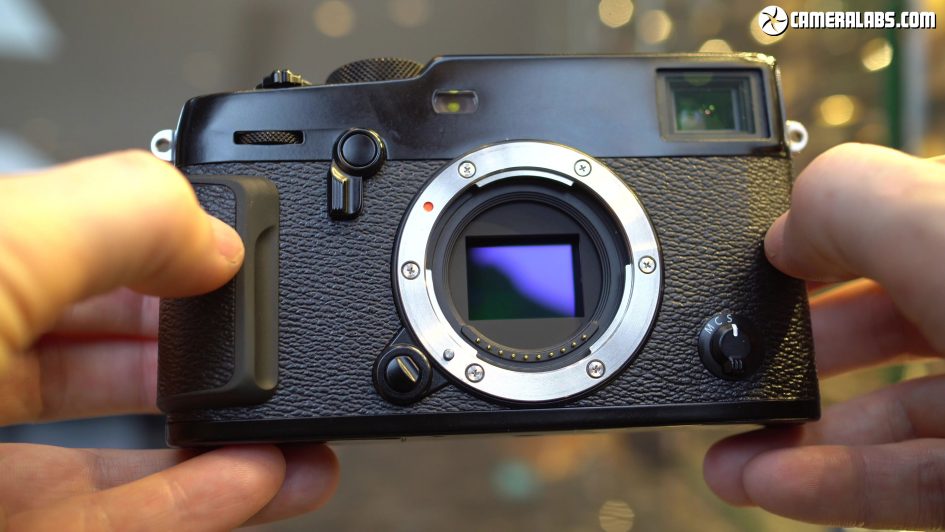
Above: The X-Pro 3 inherits the X-Trans 4 APSC sensor of the X-T3, sporting 26 Megapixels and embedded phase-detect autofocus across the entire frame. Fujifilm claims the autofocus now works at very low light levels down to -6EV with an f1.4 lens. There’s also a neat new feature that lets you program an AF limiter to restrict the range of distances that the lenses will focus over. Some longer lenses have this built-in, but it’s handy to apply it to standard or wider ones to reduce potential for hunting, especially in spontaneous street or event photography. The range you program applies to all lenses when enabled.
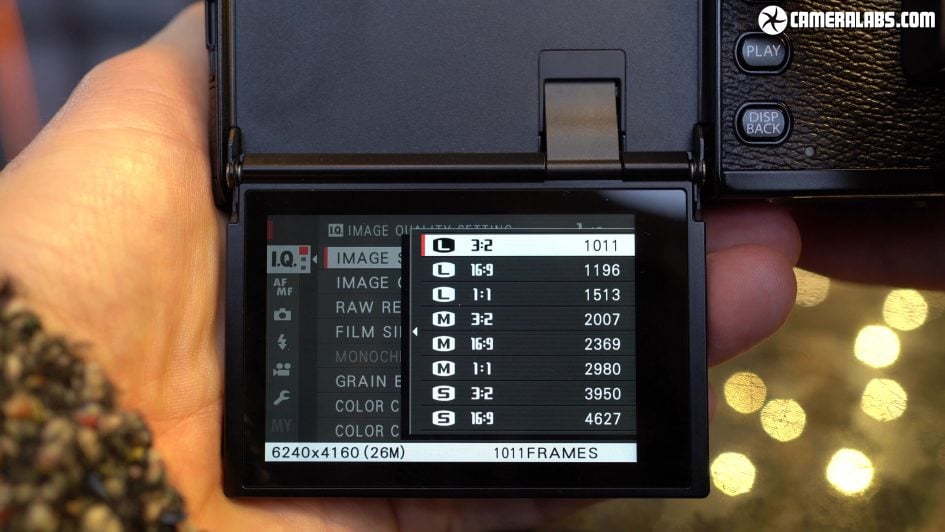
Above: With the same sensor and image processor as the X-T3 and X-T30, you’ll already know what to expect in terms of image quality, and I have tons of sample images from both models at cameralabs.com. As before the secret behind Fujifilm’s lovely out-of-camera JPEGs are the various Film Simulations, now including a new Classic Negative option that will be familiar to anyone who had lab prints made in the Eighties.
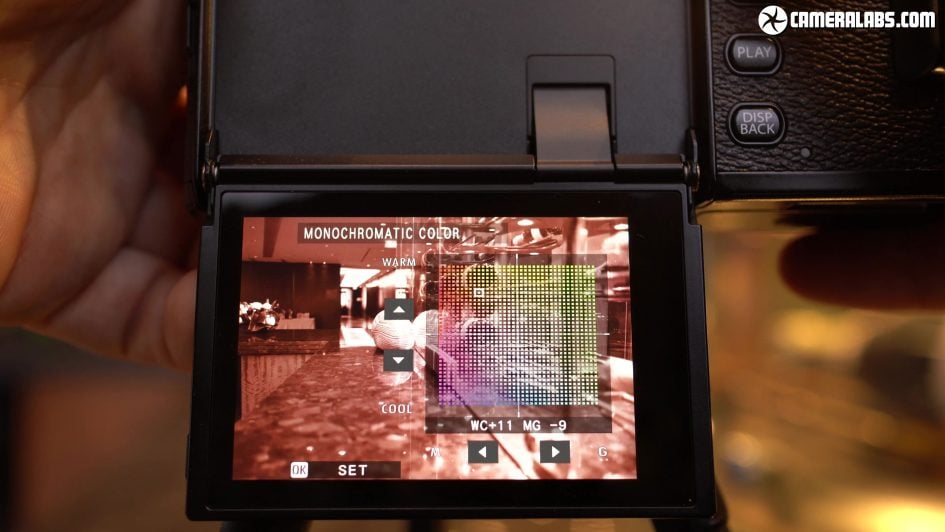
Above: The Monochrome adjustment introduced on the X-T3 which let you warm an image towards orange or cool it towards blue has been enhanced with additional hues, allowing you to give mono images a tint towards red, yellow, magenta or green with loads of fine variations. I really love this capability and hope the X-T models receive it with a firmware update.
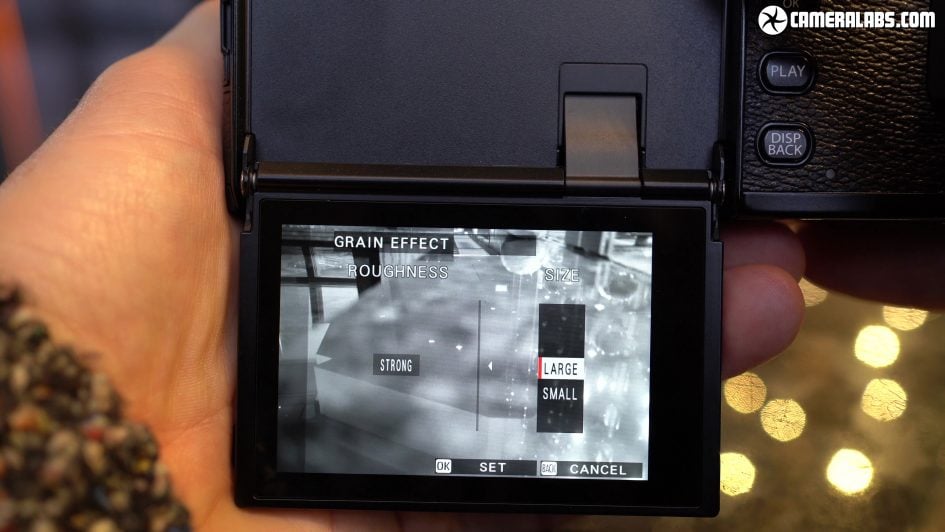
Above: The Grain effect has also been enhanced with options to adjust the roughness and grain size, again providing great control over the final image style all in-camera. Fujifilm’s also added a new Clarity control as well as allowing finer white balance adjustments in 10k units, a Blue Colour Chrome effect and the opportunity to output TIFF files in 8 or 16 bits.
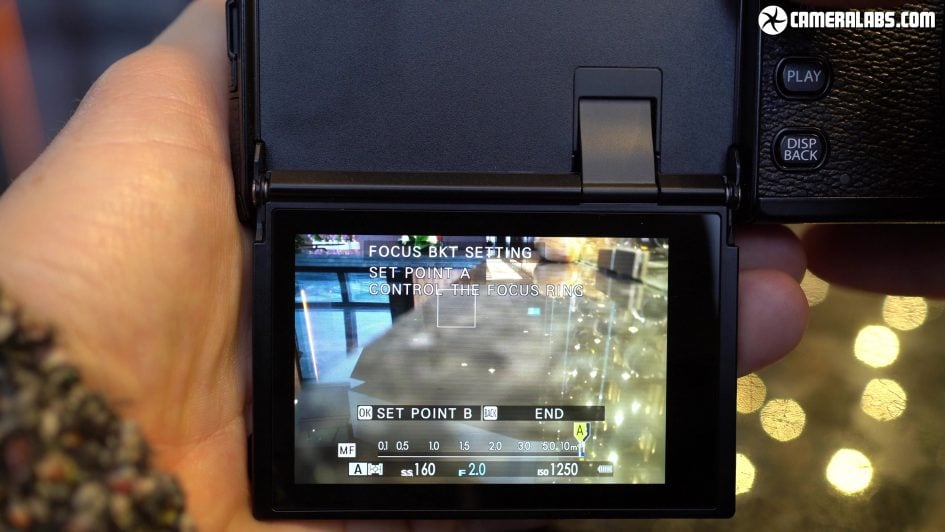
Above: There’s now an in-camera HDR Plus mode which combines three frames to increase the dynamic range, advanced multiple exposures up to nine frame and a very neatly implemented focus bracketing mode which lets you select the closest and furthest distances you’d like to be sharp in the final composite, before then letting the camera work out how many frames it needs based on the focal length, aperture and distance. You will still need to assemble the images in software later though.
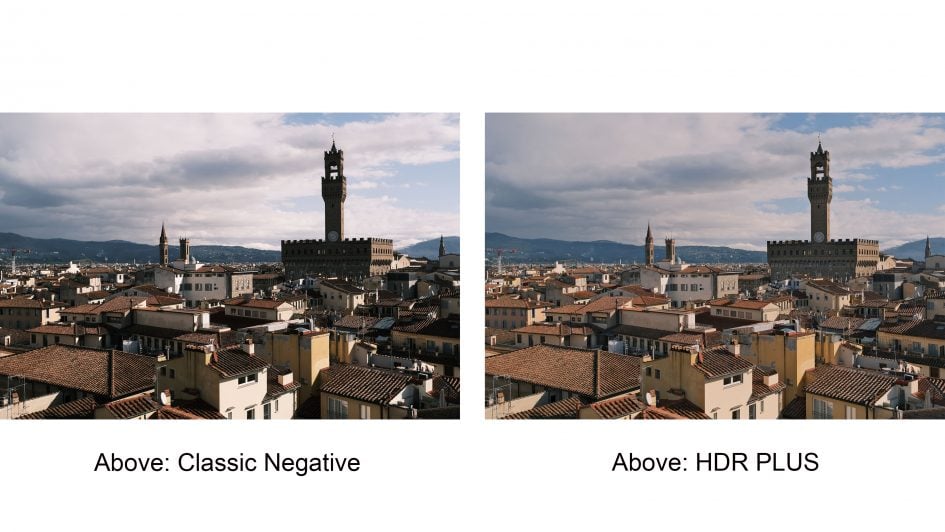
Above: Here’s the HDR Plus mode in action on the right, compared to a single frame taken in Classic Negative on the left.
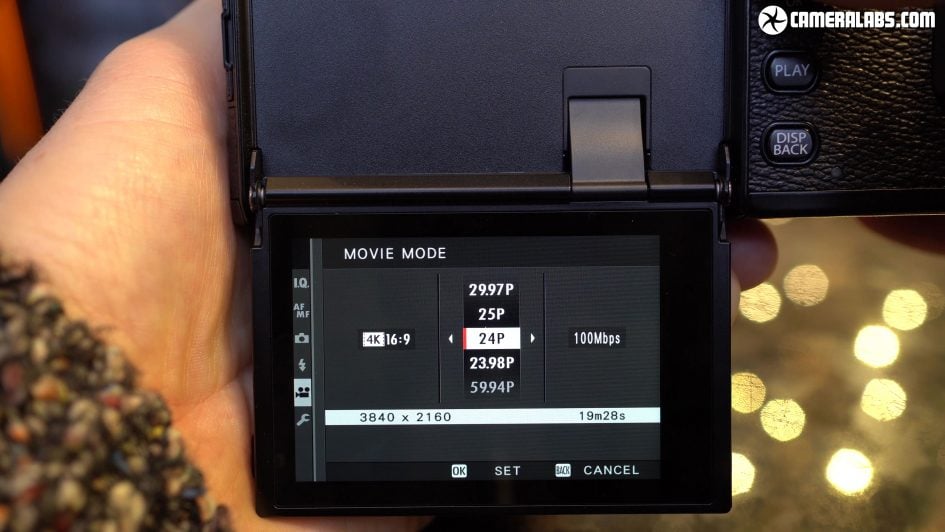
Above: Moving onto movies, the X-Pro 3 is not targeted at videographers, but I’m pleased it does at least inherit some of the capabilities of the X-T3. As such you get to film 1080 in 24 to 60p or 4k at 24, 25 or 30p, both available in 16:9 or wider 17:9 formats and at bit rates up to 200Mbit/s; the longest clip length in 4k is 15 minutes. There’s also high speed cropped 1080 available up to 120p for a four to five times slow-down, and while there’s no HDMI output, there is at least the chance to record flat footage internally in F-Log at 4:2:0 8 bit.
Above: Download the original file (Registered members of Vimeo only). Here’s a sample I filmed in 4k in the Eterna profile, using the XF 16mm lens. I also have a version in 1080p – see my Fujifilm X-Pro3 1080p movie sample.
Check prices on the Fujifilm X-Pro3 at B&H, Adorama, or Wex. Alternatively get yourself a copy of my In Camera book or treat me to a coffee! Thanks!
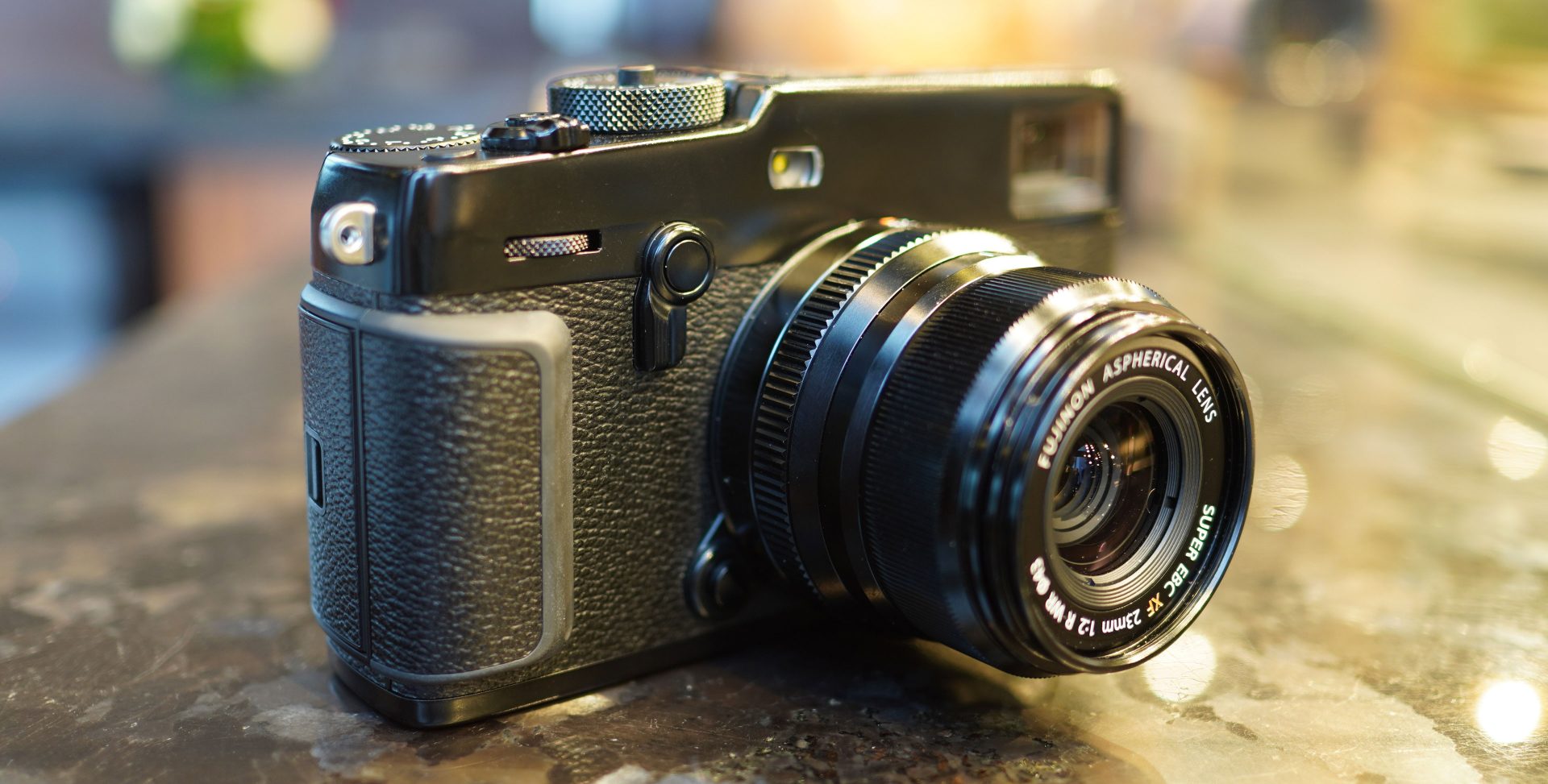
 Fujifilm’s X-Pro3 upgrades its much-loved rangefinder series with the expected sensor and processor from the X-T3 and X-T30, improves the build quality with titanium top and bottom panels, offers an optional coating for greater scratch resistance, enhances the cunning hybrid viewfinder in both its optical and electronic modes, adds a raft of processing additions including broader monochrome adjustments and a lovely new Classic Negative Simulation, and throws in neat focus bracketing and limiter options. The optical viewfinder may have lost the dual magnification of the X-Pro2, but compensated to some degree by a larger view to start with - if you mostly shoot at 23mm you’ll prefer it, although if you rarely switch lenses you may want to consider the fixed-lens X100 series instead. The biggest physical change though regards the screen which is now hidden behind a folding panel in order to focus your attention on the eye-level viewfinder experience. This means the X-Pro3 gains comfortable waist-level shooting over its predecessors, not to mention a cute indication of the current Film Simulation on the new outer panel, and while it’s less convenient to access the main screen, I liked how it encouraged me to keep shooting at eye-level - plus you can always access images and settings with the electronic viewfinder mode. Ultimately the X-Pro remains a camera that appeals to a smaller audience and you’ll already know if it’s right for you. Fujifilm understands this perfectly and offers a broad range of alternatives if you like its style, but in a different body or lower price point. I previously fell into the camp which preferred the XT over the X-Pro but with the 3, I was surprised how refreshing and enjoyable I found the shooting experience, how little I worried about settings or features, and how much I’d like to shoot with it again.
Fujifilm’s X-Pro3 upgrades its much-loved rangefinder series with the expected sensor and processor from the X-T3 and X-T30, improves the build quality with titanium top and bottom panels, offers an optional coating for greater scratch resistance, enhances the cunning hybrid viewfinder in both its optical and electronic modes, adds a raft of processing additions including broader monochrome adjustments and a lovely new Classic Negative Simulation, and throws in neat focus bracketing and limiter options. The optical viewfinder may have lost the dual magnification of the X-Pro2, but compensated to some degree by a larger view to start with - if you mostly shoot at 23mm you’ll prefer it, although if you rarely switch lenses you may want to consider the fixed-lens X100 series instead. The biggest physical change though regards the screen which is now hidden behind a folding panel in order to focus your attention on the eye-level viewfinder experience. This means the X-Pro3 gains comfortable waist-level shooting over its predecessors, not to mention a cute indication of the current Film Simulation on the new outer panel, and while it’s less convenient to access the main screen, I liked how it encouraged me to keep shooting at eye-level - plus you can always access images and settings with the electronic viewfinder mode. Ultimately the X-Pro remains a camera that appeals to a smaller audience and you’ll already know if it’s right for you. Fujifilm understands this perfectly and offers a broad range of alternatives if you like its style, but in a different body or lower price point. I previously fell into the camp which preferred the XT over the X-Pro but with the 3, I was surprised how refreshing and enjoyable I found the shooting experience, how little I worried about settings or features, and how much I’d like to shoot with it again.



